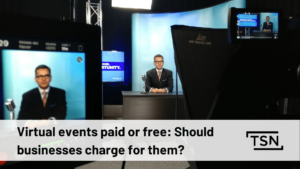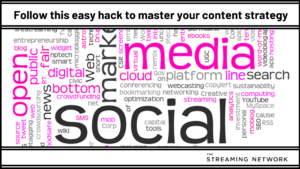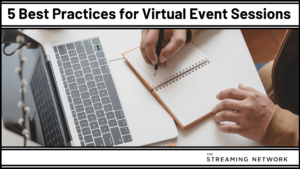Our blogs reference thought leadership quite often, so today we are going to focus on it a little more.
What Is Thought Leadership?
The concept of thought leadership has been around for years. You have heard of it a few places, aside from our blog. Thought leadership is all about providing valuable content to your leads. Without pushing your product or having some hidden motive. It is free and relevant information. People do not appreciate obvious self-promotion. Instead, they will trust Thought Leaders who offer their content without expecting something in return.
Keep reading to learn tips for how to conduct a proper thought leadership webinar program.
1. Stop Talking About Yourself
Everyone loves to talk about themselves. We see this during interviews, sales opportunities, sometimes even with speakers. Once given the opportunity, they can go on and on about themselves. Sometimes, given the situation, that may acceptable.
Often times, it’s not.
Find a niche topic that your audience values. One that you can speak about and length.
For example, The Streaming Network has a podcast series dedicated to webinar strategies. Webinars are the niche topic that we talk about. No emails or information required. It’s available on-demand and consumed on our audience’s time. Free but valuable content meant to help B2B businesses improve their webinar programs. The focus is always centered around how our expertise can help people, not how to sell our service.
2. Be Selective With Topics
Stop talking about what you think is important to your audience. Start identifying what topics your audience values. One place to start is their pain points. If you are not sure what your audience’s pain points or obstacles are, start speaking with your sales team.
Are you leveraging engagement tools such as Q&A periods or polls during your webinars? Find common questions or concerns that your audience face. Build new content from that.
3. Think Analytically
If you have ever A/B tested or proven a theory – talk about it. If not, share case studies or concepts done on your topic after conducting your own analysis. Even failure counts.
Take all your accumulated knowledge and expertise and present it to your audience. If there’s a strategy that has been working for your team, talk about it. Break it down and explain why and how it works.
Include strategies that haven’t worked – this shows vulnerability. This establishes a sense of trust between your audience and yourself. It shows that you are capable of making mistakes. You are showing that you have learned something from it and are willing to share that with others.
4. Practice, Practice, “Practise”?
It’s fine to talk about your mistakes, but to commit one too many during your webinar series is different. It comes off as unprofessional.
Being knowledgeable about your niche and being a public speaker are two very different strengths. Not everyone can be both.
Do a dry run or two on your webinar. See how comfortable your speakers are, especially if they are new to being on a webinar.
- You may find some issues with your webinar provider.
- The microphones might not be working.
- You’ve gone off topic with your speakers and are struggling to remain focused. Or you find it difficult to move onto the next topic.
No one appreciates being surprised. Always practice your webinar event before going live.
5. Always Include Calls-To-Action
You have hosted an engaging webinar full of valuable content for your audience. What now?
What do you want your audience to leave your webinar with? Do you want them to download a lead magnet, call your sales team, ask questions? Include a call-to-action (CTA) throughout your webinar event. Especially at the end to help transition your audience into taking the next steps.
Let’s Recap
Many B2B marketers claim to produce thought leadership content, but that’s not true.
Real thought leadership content is when you take the attention away from yourself. Stop talking about all that you have accomplished. Unless it is providing actionable insights to your audience. Start talking about the pain points your audience faces. Discuss new strategies they can put in place to improve their own business.
Ask yourself, are you talking about topics that your audience finds helpful? Or things that you want to discuss? Put your audience and their needs first. It sounds simple but is sometimes hard to execute. Not sure how to differentiate between the two? Ask your sales team or read your Q&A to find inspiration for topics that your audience wants answers to.
Present your knowledge and experience to your audience. If there’s a strategy that has been working for you, go into depth on why and how it works.
Practice your webinar event before going live. No one will be willing to trust an expert with a webinar program that cuts out or has audio issues. Ensure that your speakers can present their discussion points while being recorded.
What do you want your audience to leave your webinar with? Do you want them to download a lead magnet, call your sales team, ask questions? Include a call-to-action (CTA) throughout your webinar event. Especially at the end to help transition your audience into taking the next steps.






